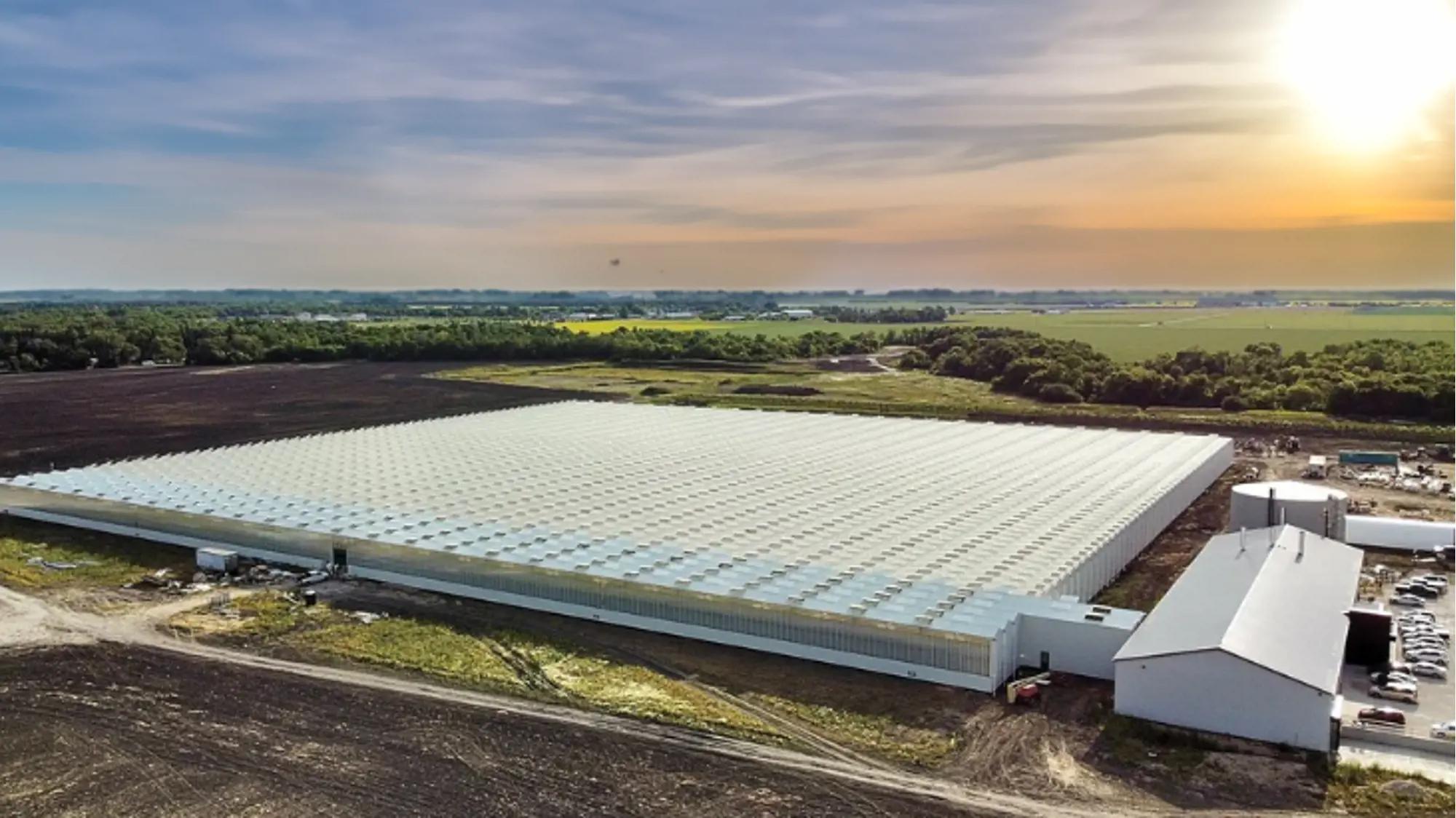The precision agriculture business Netafim has partnered with Vermillion Growers to build the first large-scale vegetable greenhouse in Manitoba, Canada.
Gakon Netafim, the company’s commercial greenhouse project division, is a world-renowned leader in controlled environment agriculture (CEA). The facility celebrated its grand opening on July 27, 2023.
Vermillion Growers will begin growing tomatoes year-round across 10 acres, with plans to expand their production area and grow additional crops. Canada currently imports over 75 percent of its vegetables and 50 percent of its tomatoes. With reduced shipping time, customers can get fresh, higher-quality tomatoes at their local grocery stores, even in remote communities. Reducing transit time and the resulting spoilage will also cut down on food waste.
“The combination of world-class greenhouse technology and local expertise is why Vermillion invested in Gakon Netafim solutions,” says Maria Deschauer, managing director of Vermillion Growers. “We prioritize growing fresh produce, as well as healthy people and sustainable communities. All three are connected, and we are thrilled for their support.”
The roof structure on the greenhouse will collect enough water to meet 50 percent of the entire facility’s irrigation needs. Additionally, the double-screen system minimizes light pollution and reduces the overall energy used by 50 percent.
“The double-screen technology is optimal for controlling the climate in the greenhouse and allows for greater energy savings and efficiency,” says Ricky Elz, greenhouse key account project manager at Gakon Netafim. “The blackout screens provide shading to crops and are essential to crop growth in the greenhouse.”
The greenhouse has hired 30 workers and is expected to bring 200 jobs to the community. Vermillion Growers has also provided job training and support to several workers who moved from Ukraine to escape from the Russian invasion. Dauphin, the community where the greenhouse is located, has one of the largest Ukrainian populations per capita in Canada.
Founded in 1965 as an irrigation technology company, Netafim pioneered drip irrigation technology. Presently the company has 6,000 greenhouse projects worldwide, providing “global expertise with local presence,” says Elz.
“We’re not just building a greenhouse,” Elz continues, “we’re building a business.” He notes that Netafim offers “full turnkey solutions” starting from construction on open ground. Because the company has “some financial backbone,” he notes, it can also offer “finance solutions.”
Netafim builds both vertical and horizontal greenhouses; about 80 percent of its operations are vertical, Elz says, and 20 percent are horizontal.
Elz also points out that many open-field growers are switching to greenhouse operations because certain large purchasers, such as restaurant chains, airlines, and premium food chains, demand produce grown with controlled-environment agriculture (CEA).
The greenhouse operations can produce items of standardized color, taste, and texture that are not possible under open-field conditions. “We’re able to meet specific market requirements,” Elz continues.
Elz adds that the principal crops currently grown in CEA include vine crops such as cucumbers, tomatoes, peppers, eggplants as well as strawberries, leafy greens, and microgreens, including basil.



